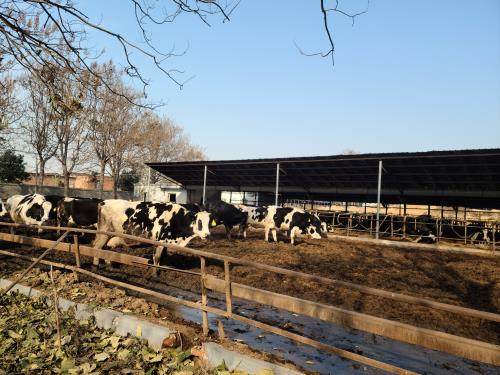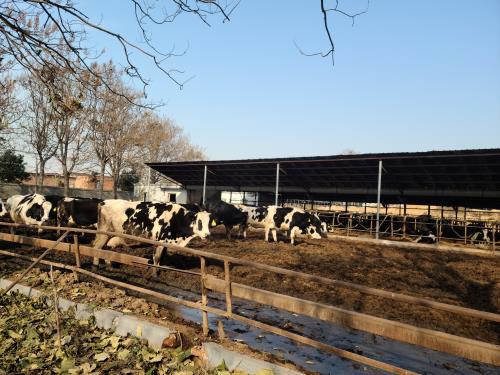As is well known, cows only produce milk when they are pregnant. If there is infertility in cows on the farm, it will cause a decrease in milk production, directly affecting the economic benefits of the farm. There are many reasons for infertility in cows, and different prevention and treatment measures should be taken according to each reason. At the same time, ultrasound diagnostic technology should be combined with cows to solve the problem of infertility in cows.
Using B-ultrasound diagnostic technology to solve infertility in cows
Ovarian diseases account for about one-third of infertile cows. The main pathological manifestations include ovarian quiescence, persistent corpus luteum, multiple follicular development, delayed or absent ovulation, follicular cysts, and corpus luteum cysts. The main causes of this disease include poor feeding management, single feed, lack of certain nutrients, malnutrition in cows, emaciation, endocrine deficiency or disorder, uterine hydrosalpinx or pus accumulation, and inability to eliminate the corpus luteum.
Treat according to different situations:
Ovarian stillness and persistent corpus luteum can be treated with 45~C physiological saline for uterine hot bath, and ovarian massage can be performed through the rectum. The comprehensive use of potassium iodide (KI), chorionic gonadotropin (HCG), and chloroprostenol for treatment is as follows: first, oral preparation, 5g/d, continuous feeding for 7 days, and intravenous injection of HCG 5000IU on the 5th to 7th day. At the same time, intramuscular injection of 0.4mg of chloroprostenol was administered to cows, and after estrus mating, another course of KI preparation was taken.
Cows with alternating follicular development, delayed ovulation, or anovulation can receive intramuscular injection of LRH. A3 0.2-0.4mg or HCG1000-2000TU 8 hours before or during insemination.
Follicular cysts can be treated with intramuscular injection of 0.6~Img of LRH. A3 and 50-100mg of progesterone.
Uterine diseases account for about 2/3 of infertile cows. The main manifestations are various types of endometritis and uterine deposits. The main causes of its onset are improper operation during artificial insemination, inadequate disinfection, improper midwifery during cow delivery, secondary infections caused by the inability to lower the placenta, and other nutritional factors.
Mild cases can be treated by injecting 60-100ml of 5% glucose or physiological saline at 30-35 ℃, along with 1.6 million IU of penicillin and 2 million IU of streptomycin, into the uterus. The injection time of medication should be 6-8 hours before or after insemination.
Severe cases can be treated with injecting 100-150ml of 0.2% Lysol, 0.1% Potassium Permanganate, 0.02% Furacillin, 0.02% Neomethoxam, 38% 40-C into the uterus. Inject 30ml of Gongjing into the uterus. Inject 50-100ml of Gongkang II into the uterus.
More stubborn cases are treated with dual antibody iodine therapy. Penicillin 3.2 million IU, streptomycin 2 million IU, physiological saline 800-1000ml, and 2% iodine tincture 3-5ml are prepared into a flushing solution, 38~ Inject into the uterus at 40 ℃, wash three times during one estrus period, with an interval of 5-7 days between each wash. Gongdekang is administered once every 7-10 days or during one menstrual period, with one dose per injection. Gongkang III is infused with one tube every 2-3 days, and 2-3 tubes are infused daily.
There are many factors that affect the conception rate of cows, but there are not many that cause absolute infertility in cows. As long as regular use of Veterinary ultrasound diagnosis, timely and reasonable treatment, timely insemination, and scientific feeding management are carried out, the breeding and conception rate of cows can be significantly improved.








